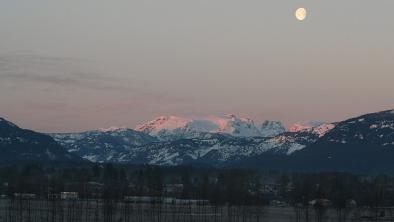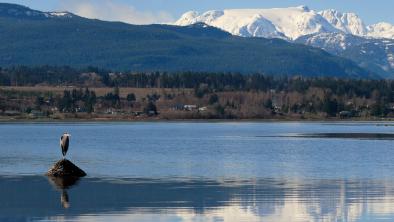B.C. considers proposal for coal mine
Globe & Mail

If approved, the Raven site would be the first new coal mine on Vancouver Island since 1987.
The provincial government is weighing a proposal for an underground coal mine on Vancouver Island.
If approved, the Raven site would be the first new coal mine on Vancouver Island since 1987, when digging began at the Quinsam mine near Campbell River.
The project would also forge another link between Asian steel producers and British Columbia's coal resources, which are generating international interest even in a global financial crisis.
More than half of B.C. coal exports last year went to Japan and South Korea. In the Raven project, Vancouver-based Compliance Energy Corp. set up a joint venture with Itochu Corp. of Japan and LG International Corp. of South Korea, which together hold a 40-per-cent stake in the partnership.
Compliance expects its Asian partners to bring financial and strategic resources to the table.
"The financing is an appeal," Compliance chief executive officer John Tapics said. "But it's more important that both of these companies are trading companies and have access to international coal markets. And they know coal, as a commodity, quite well."
The Raven mine, expected to cost between $100-million and $150-million to build, would produce primarily metallurgical, or coking, coal for making steel.
According to a project description filed with the province, steel mills in Japan, South Korea and Taiwan would be the main customers for the mine's coking coal. Lower-value thermal coal would go to Asian customers and cement manufacturers in Canada and Washington State.
That means little or no output from the proposed mine would be destined for coal-fired electricity plants. But the Raven proposal still irks those who see a glaring contradiction between the provincial government's green agenda and its support of a resurgent coal sector.
"It is completely inconsistent," said Andrew Weaver, a professor with the University of Victoria's School of Earth and Ocean Sciences. Coal accounts for more greenhouse-gas emissions per unit of energy produced than any other fuel source, he added.
"B.C. essentially sends off a product that produces emissions elsewhere. But it's a dirty product and B.C. gets no penalty. It's like saying, 'I don't have any garbage in my neighbourhood,' but you take all your garbage and dump it in your next-door neighbour's yard."
There is no such contradiction, said Randy Hawes, Minister of State for Mining in B.C.
Coking coal from the Raven project, like output from nearly all of B.C.'s coal mines, would be used to make steel, not for generating electricity, he emphasized. And that steel is an essential ingredient in "green" technology ranging from hybrid cars to wind turbines.
(B.C. essentially ruled out coal-fired electricity in its own backyard with its 2006 Energy Plan, which requires any new coal-fired electricity project to use carbon-capture technology to eliminate greenhouse gas emissions, technology that is not yet commercially viable.)
"We have a considerable amount of coal in B.C., we have a very viable industry mining it, and they mine it in an extremely environmentally correct way," Mr. Hawes said. "The use of the coal in places like China - we know that they are taking steps to clean up their act and that's a gradual process."
Coal is the backbone of the British Columbia mining sector, accounting for $3.2-billion of last year's record $8.4-billion in mining revenues, according to a PricewaterhouseCoopers industry survey.
The Raven mine, which would be next to former mine and exploration sites that date back to the 1800s, would have a projected "mine life" of 20 years and produce about 1.5 million tonnes of coal a year, making it a relatively small operation by B.C. standards. Canada is the world's second-biggest producer (behind Australia) of coking coal.

